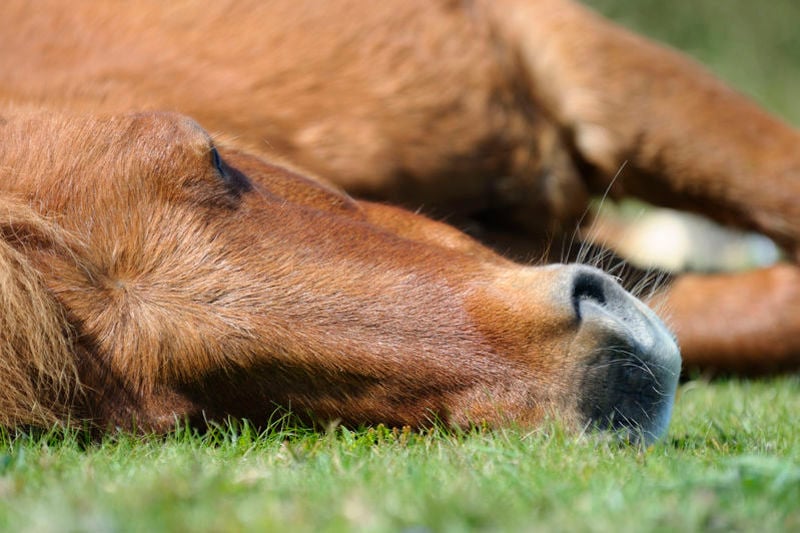Anouk Frieling, MSc Equine Sciences, BSc (Hons)
Sleep is an essential behaviour for overall well-being and is an important component for maintaining homeostasis and circadian rhythms in the body (Greening et al., 2021). Horses are prey animals and therefore their sleeping patterns are adjusted to their natural environment (Greening et al., 2021). If sleeping patterns are disturbed, this can affect the body and the brain resulting in various illnesses and behavioural disorders (Chung et al., 2018). Therefore, to gain more understanding about sleep and resting behaviour, sleeping patterns of horses and the effect of environmental influences have been studied (Greening et al., 2013; Oliveira et al., 2022), to improve and optimise equine welfare (Greening et al., 2021). This article will review the sleep patterns of horses and the circadian rhythm involved with sleep, the factors that influence sleep and overall equine welfare and lastly, the consequences of sleep disturbances.
Sleep Patterns and Circadian Rhythms in horses
Even though horses are domesticated animals, their sleeping patterns are adjusted to their natural environment and behaviour and the danger of predation (Chung et al., 2018). Because horses are prey animals they sleep less, and are more vigilant, than predator animals (Hartman & Greening, 2019). In a full sleeping cycle, there are two phases of sleep, the non-rapid eye movement phase (NREM) and the rapid eye movement phase (REM) (Greening et al., 2021). During the NREM phase rapid eye movements do not occur, but the heart and respiratory rate both decrease (Oliveira et al., 2022). Once horses enter the REM phase, rapid eye movements do occur and loss of muscle tone can be observed (Oliveira et al., 2022).
Usually, horses rest between 4 to 15 hours per day whilst in a standing position (Chung et al., 2018). The passive stay apparatus, a mechanisms involving muscles, tendons and ligaments in the legs, enables the horse to stand for prolonged periods and enter light sleep whilst using minimum muscle effort (Gussekloo et al., 2011). Because equine sleeping patterns are adjusted to be able to respond to danger in their environment, the horse will not rest for 4 to 15 hours at once but will frequently rest for shorter periods (Oliveira et al., 2022). The NREM phase will be divided into about 30 NREM cycles each lasting approximately 3 to 4 minutes (Greening et al., 2021). Generally, horses lie down for a couple of minutes to a couple of hours during the day (Kelemen et al., 2021). Lying down for at least 30 minutes at once is required to enter the REM phase and complete a full sleeping cycle (Kelemen, et al., 2021). Once horses enter the REM phase it will last for approximately 3 to 5 minutes per cycle (Greening et al., 2021; Kelemen et al., 2021). Altogether, horses sleep approximately 3 hours per day (Greening et al., 2021).
Circadian rhythms are biological rhythms, including sleep, that are regulated within a 24-hour cycle and are modulated by day and night (Falcón et al., 2009). Sleeping patterns are regulated and influenced by the production of the hormone melatonin, which is synthesised from circulating tryptophan in the body (Benloucif et al., 2005). The production of melatonin is modulated by the pineal gland (Altinsaat et al., 2009), a small endocrine gland in the brain which is regulated by the ‘biological clock’ or the suprachiasmatic nucleus (SCN), also located in the brain (Gunata et al., 2020). Production and release of melatonin is related to photoperiod (Chung et al., 2018), meaning that the production and secretion of melatonin is inhibited during light periods, but is stimulated once it is dark, leading to the release of melatonin in the bloodstream (Gunata et al., 2020). Light is perceived through the retinal ganglion cells in the retina of the eye and once they perceive light or dark from the environment, the cells initiate or inhibit the pathway that leads to the production and secretion of melatonin in the pineal gland (Ostrin, 2019). Melatonin’s main function is to provide the body with information about the dark periods during the day (Claustrat et al., 2005). This information will induce sleep or drowsiness in horses (Chung et al., 2018), and therefore melatonin is the key hormone that influences sleep in horses.
Factors that have an Effect on Sleeping Behaviour and Equine Welfare
Equine welfare can be optimised by evaluating the five domains (nutrition, overall health, environment, behaviour and mental state) that can ensure optimal welfare and improve management accordingly (Mellor & Burns, 2020). Studies often use sleep and lying behaviour to measure and assess equine welfare as horses lie down once they feel safe and comfortable in their environment (Chung et al., 2018). As mentioned, recumbency (lying down) is essential to enter the REM phase of sleep and complete a full sleeping cycle (Auer et al., 2021). Completing a sleeping cycle is important for a range of physiological processes, therefore it supports and optimises overall health, behaviour and the mental state of the horse, making sleep a suitable tool to measure equine welfare (Auer et al., 2021; Greening et al., 2021).
Since domestications, horses have been housed in different environments using varying housing systems (Kelemen et al., 2021). It has been hypothesised that the environment and housing systems can have an effect on the sleeping patterns of horses and therefore influence overall welfare (Kelemen et al., 2021). Over recent years, studies have identified the factors that influence sleeping behaviour to create more awareness and optimise equine welfare.
Effect of Stable Beddings
Pedersen et al. (2004) studied the effect of stable beddings on the lying behaviour of horses. There are various materials that function as stable beddings, but commonly used materials are straw or shavings (Figure 1). For this study Pedersen et al. (2004) stabled nine horses on wheat straw and nine horses on oven-dried shavings and observed their resting behaviour during a trial period of three weeks. Horses stabled on a straw bedding spent significantly more time in lateral recumbency in comparison to horses stabled on shavings (Pedersen et al., 2004). This significant difference between the two bedding materials and lying behaviour was also observed during a study carried out by Greening et al. (2013). Koster et al. (2017) noted a significant difference between straw, shavings and straw pellets, with horses spending less time in recumbency on straw pellets in comparison to shavings and straw.
Rubber mats are often used to cover the stable floor and serve as bedding material or as a floor base for other bedding materials such as straw or shavings. Burla et al. (2017) observed a significant difference in lying behaviour between horses stabled on rubber mats and horse stabled on rubber mats covered with bedding materials. Horses stabled on rubber mats with the bedding material spent significantly more time in recumbency in comparison to the horses that were stabled on plain rubber mats (Burla et al., 2017) This suggests that horses prefer a soft and deformable surface leading to increased lying behaviour and sleeping patterns (Burla et al., 2017; Koster et al., 2017).
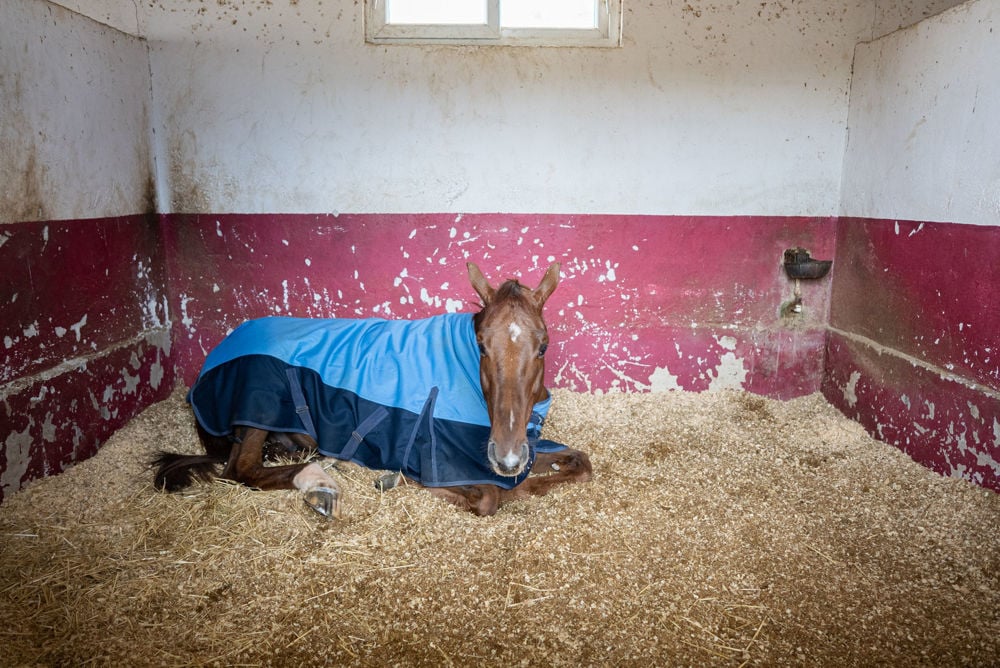
Figure 1: Different beddings in the stable have an effect on the lying behaviour of horses. Because the lying behaviour is dependant on the type of bedding, the sleeping behaviour is also influenced by beddings.
Effect of Stable Size
Stable measurement guidelines have been implemented to optimise equine welfare as stable size can influence the welfare by, for example, lying and sleeping behaviour. Raabymagle & Ladewig (2006) analysed the effect of box size on lying behaviour of horses. During the study horses were kept in either a small or large box (Figure 2) based on their wither height (Raabymagle & Ladewig, 2006). Results of this study showed that horses in the larger stables spent more time recumbent in comparison to the horses in smaller stables. Throughout the trial period, lying behaviour increased in horses changing from a small stable to a larger stable (Raabymagle & Ladewig, 2006). These results demonstrate the importance of suitable stable sizes and the effect it can have lying behaviour and sleeping patterns of horses.
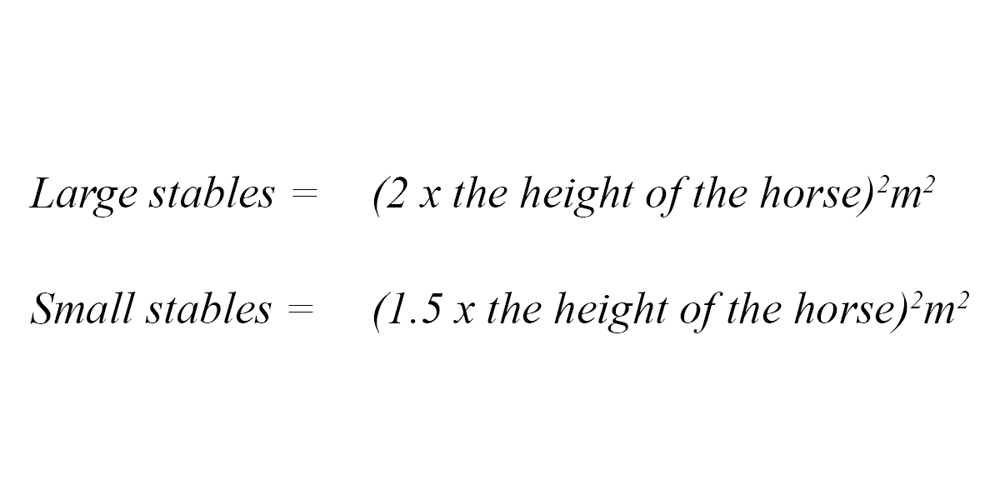
Figure 2 . Formulas used during the study conducted by Raabymagle & Ladewig (2006) to establish stable sizes used during the trial period.
Effect of Artificial Light
Daylight and darkness have an effect on the production of melatonin in the pineal gland and therefore influence sleeping patterns. . Both the NREM phase and the REM phase were significantly reduced in horses that were stabled in an environment with artificial fluorescent lighting, suggesting that artificial lighting in stables can have a negative effect on sleeping patterns (Figure 3). Greening et al. (2021) studied the effects of light on sleeping patterns in horses. During the trial period one of the treatment groups was housed in stables with natural light whilst another treatment group was stabled in an environment with artificial fluorescent lights (Greening et al., 2021)
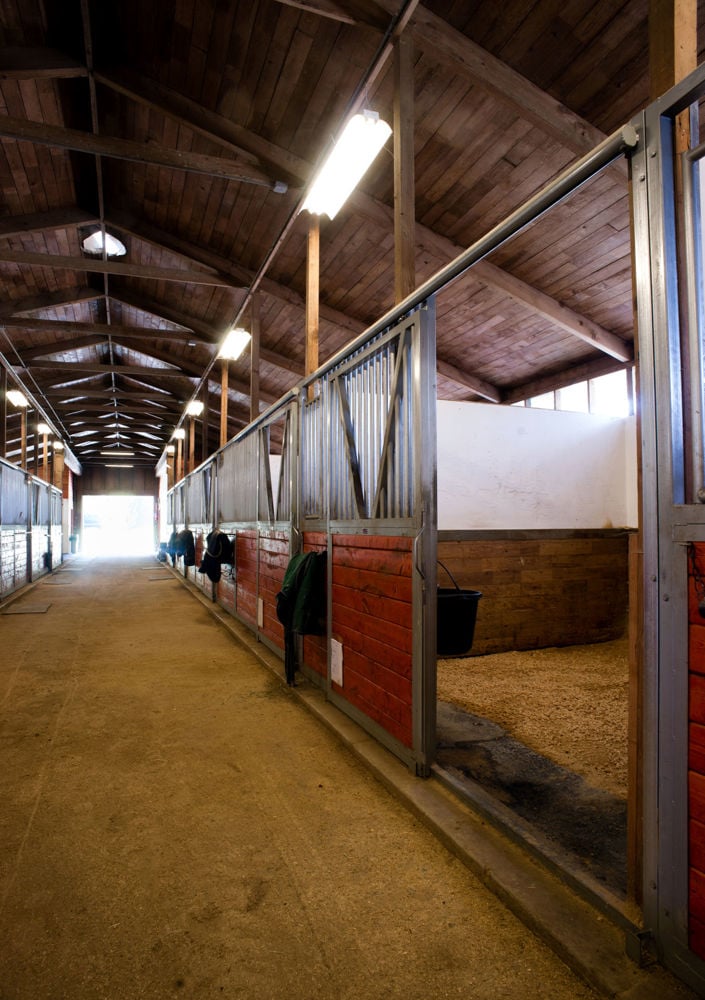
Figure 3: The type of artificial light has a significant effect on the sleeping behaviour of horses. This is possibly linked to the production and inhibition of melatonin which relies on light and dark during the day.
Effect of Disease and Physical Challenges
Disease and physical challenges have been shown to negatively influence the quantity and quality of sleep in humans. Therefore, . Due to decreased amount spent in recumbency, horses are unable to enter the REM phase, thus disease or physical discomfort can influence the sleeping patterns in horses. Oliveira et al. (2022) studied the lying and resting behaviour in hospitalised horses diagnosed with osteoarthritis. Horses with severe osteoarthritis spent less time in recumbency in comparison to horses with milder osteoarthritis (Oliveira et al., 2022). This is likely due to discomfort in flexed joints that horses with severe osteoarthritis experience when they try to lie down (Oliveira et al., 2022)
Effect of Dietary Changes
Dallaire & Ruckebusch (1974) observed the effect of different dietary conditions on the sleeping behaviour of housed ponies. Trial ponies first received ad lib hay to decide the baseline for the study. After establishing a baseline hay was replaced with oats. When oats were fed instead of hay, the total recumbency time and time spent asleep increased (Dallaire & Ruckebusch, 1974). It is suggested that this observation is a consequence of the production of gastrointestinal hormones, due to rapidly metabolising oats, which is stimulated due to a satisfied feeling therefore increasing sleeping behaviour (Dallaire & Ruckebusch, 1974).
Sleeping Disorders in horses
Sleeping disorders identified in horses thus far are hypersomnia and narcolepsy (Bertone, 2015). Horses diagnosed with hypersomnia spend some time lying down, but due to underlying health concerns, are unable to enter the REM phase leading them to experience REM sleep deficiency (Lyle & Keen, 2010). Narcolepsy has been diagnosed in horses experiencing excessive daytime sleepiness and lack of or abnormal REM sleep (Lyle & Keen, 2010). Abnormal REM sleep is characterised by cataplexy (loss of muscle tone and reflexes) (Lyle & Keen, 2010). Although these disorders have been identified, there is limited research available about the effects these disorders have on equine behaviour, health and activity. But, due to the decreased quality of sleep, it is suggested that it affects overall equine welfare.
Greening & McBride (2022) recently published a more in-depth article reviewing the relation between sleeping behaviour and equine welfare.
Consequences of Sleep Disturbances on Equine Welfare
As explained previously, lying and sleeping behaviour are influenced by physical distress and environmental insecurities (Bertone, 2006). If the physical distress and environmental insecurities remain for a prolonged period, the sleeping patterns are influenced and horses can start to experience sleep deficiency (Bertone, 2006). When horses experience sleep deficiency, specifically REM sleep deficiency, it can result in various health and mental issues (Greening & McBride, 2022).
Severe REM sleep deficiency, due to lack of recumbency, can result in horses collapsing as they unintentionally enter the REM sleep phase whilst standing (Bertone, 2015). Williams et al. (2008) evaluated the normal response of horses to environmental stress. During the study recumbency was not observed in one of the trial horses (Williams et al., 2008). Therefore, if the horse entered REM sleep it occurred while in a standing position (Williams et al., 2008) (Figure 4). A dramatic loss of muscle tone was observed when the horse entered the REM phase and the horse’s head leaned forward to the ground (Williams et al., 2008). Because the limbs are unable to support the horse in a standing position once it enters REM sleep, the horse would collapse leading it to immediately wake up (Williams et al., 2008). Once the underlying issue of the lying and sleeping behaviour of the horse was identified and resolved, the horse slept for a prolonged period to compensate for the lack of sleep during the trial period (Williams et al., 2008). If the condition becomes chronic horses can struggle to maintain a healthy body condition and also experience decreased attitude and poor performance (Bertone, 2015).
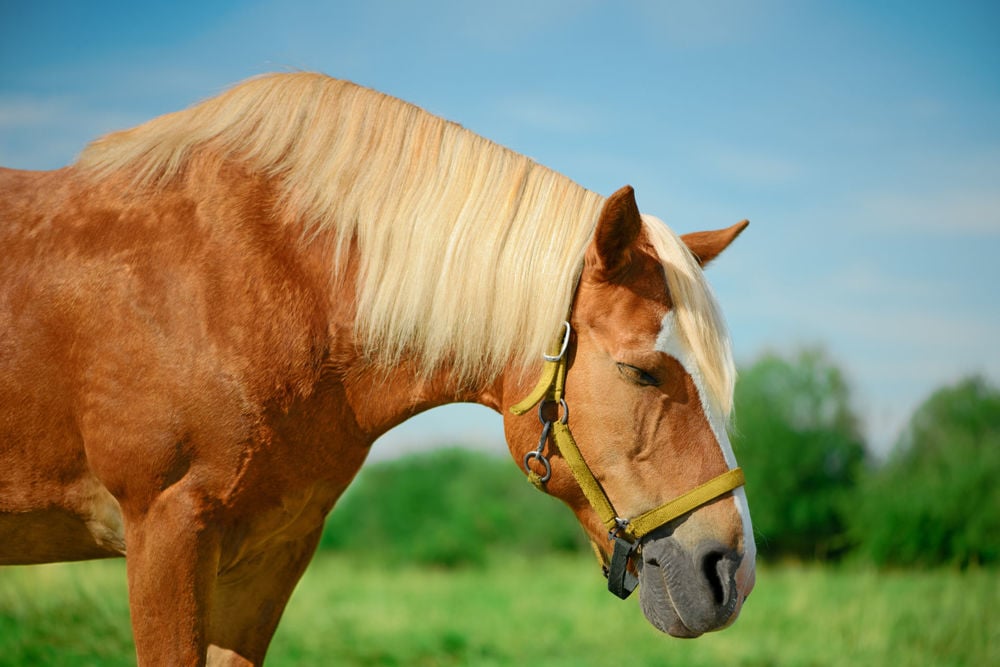
Figure 4: If horses experience sleep deficiency, it is possible that they unintentionally enter the REM sleep while standing. This can result in horses collapsing as a horse requires to lie down to enter REM sleep.
It is suggested that sleep deprived horses can develop stereotypic or abnormal behaviour (Chung et al., 2018). Stereotypic behaviours are often characterised as box-walking, weaving or crib-biting (Cooper & McGreevy, 2007). The behaviour is repetitive and does not seem to have a specific goal (Hausberger et al., 2007), with horses often display stereotypical behaviour due to being in a stressful environment for a prolonged period (Briefer Freymond et al., 2020). Currently, studies that have identified the effects of sleep deprivation on behaviour are scarce therefore there is an interest in further investigating this area (Greening & McBride, 2022).
Conclusion
Sleep is an essential behaviour for various functions in the body and overall well-being of the horse. There are two phases of sleep the NREM phase and REM phase. Horses sleep for approximately 3 hours per day divided into 30 NREM cycles each lasting for approximately 3-5 minutes and the REM phase which usually lasts 3-4 minutes. Sleep is part of the circadian rhythm in the body and is regulated by the hormone melatonin which is secreted from the pineal gland. The production of melatonin is regulated by light and dark which is perceived through retinal ganglion cells in the retina of the eye. Melatonin is therefore a key factor in horses sleeping patterns. Lying and sleeping behaviour is often used to measure equine welfare as horses lie down and sleep once they feel comfortable in their environment. Environmental differences and different housing systems can have an effect on the lying and sleeping behaviour of the horse and therefore also on the overall welfare. If horses remain in a condition where they are unable to sleep regularly they can become sleep deprived. This can have a negative effect on their behaviour and their welfare.
References
Altinsaat, C. C., Üner, A. G., Sulu, N., & ErgüN, A. (2009). Seasonal variations in serum concentrations of melatonin, testosterone, and progesterone in Arabian horse. Ankara Universitesi Veteriner Fakultesi Dergisi, 56(1): 19-24.
Auer, U., Kelemen, Z., Engl, V., & Jenner, F. (2021). Activity time budgets—a potential tool to monitor equine welfare? Animals, 11(3): 1-12.
Benloucif, S., Guico, M. J., Reid, K. J., Wolfe, L. F., L’Hermite-Balériaux, M., & Zee, P. C. (2005). Stability of melatonin and temperature as circadian phase markers and their relation to sleep times in humans. Journal of Biological Rhythms, 20(2): 178-188.
Bertone, J. J. (2006). Excessive Drowsiness Secondary to Recumbent Sleep Deprivation in Two Horses. Veterinary Clinics of North America - Equine Practice, 22(1): 157-162.
Bertone, J. J. (2015). Chapter 10 - Sleep and Sleep Disorders in Horses. In Furr, M., Reed, S., (Eds.) Equine Neurology: Second Edition. John Wiley & Sons Inc.: New York, USA.
Briefer Freymond, S., Beuret, S., Ruet, A., Zuberbühler, K., Bachmann, I., & Briefer, E. F. (2020). Stereotypic behaviour in horses lowers stress but not spatial learning performance. Applied Animal Behaviour Science, 232(2020): 1-11.
Burla, J. B., Rufener, C., Bachmann, I., Gygax, L., Patt, A., & Hillmann, E. (2017). Space allowance of the littered area affects lying behavior in group-housed horses. Frontiers in Veterinary Science, 4(23): 1-12.
Chung, E. L. T., Khairuddin, N. H., Azizan, T. R. P. T., & Adamu, L. (2018). Sleeping patterns of horses in selected local horse stables in Malaysia. Journal of Veterinary Behavior, 26(2018): 1-4.
Claustrat, B., Brun, J., & Chazot, G. (2005). The basic physiology and pathophysiology of melatonin. Sleep Medicine Reviews, 9(1): 11-24.
Cooper, J., & McGreevy, P. (2007). Stereotypic Behaviour in the Stabled Horse: Causes, Effects and Prevention without Compromising Horse Welfare. In: Waran, N (Eds.) The Welfare of Horses. Animal Welfare, volume 1. Springer: Dordrecht, the Netherlands.
Dallaire, A., & Ruckebusch, Y. (1974). Sleep and wakefulness in the housed pony under different dietary conditions. Canadian Journal of Comparative Medicine., 38(1): 65-71.
Falcón, J., Besseau, L., Fuentès, M., Sauzet, S., Magnanou, E., & Boeuf, G. (2009). Structural and functional evolution of the pineal melatonin system in vertebrates. Annals of the New York Academy of Sciences, 1163: 101-111.
Greening, L., Downing, J., Amiouny, D., Lekang, L., & McBride, S. (2021). The effect of altering routine husbandry factors on sleep duration and memory consolidation in the horse. Applied Animal Behaviour Science, 236(2021): 1-8.
Greening, L., & McBride, S. (2022). A Review of Equine Sleep: Implications for Equine Welfare. Frontiers in Veterinary Science, 9: 1-22.
Greening, L., Shenton, V., Wilcockson, K., & Swanson, J. (2013). Investigating duration of nocturnal ingestive and sleep behaviors of horses bedded on straw versus shavings. Journal of Veterinary Behavior: Clinical Applications and Research, 8(2): 82-86.
Gunata, M., Parlakpinar, H., & Acet, H. A. (2020). Melatonin: A review of its potential functions and effects on neurological diseases. Revue Neurologique, 176(3): 148-165.
Gussekloo, S. W. S., Lankester, J., Kersten, W., & Back, W. (2011). Effect of differences in tendon properties on functionality of the passive stay apparatus in horses. American Journal of Veterinary Research, 72(4): 474-483.
Hartman, N., & Greening, L. M. (2019). A Preliminary Study Investigating the Influence of Auditory Stimulation on the Occurrence of Nocturnal Equine Sleep-Related Behavior in Stabled Horses. Journal of Equine Veterinary Science, 82(2019): 1-4.
Hausberger, M., Gautier, E., Müller, C., & Jego, P. (2007). Lower learning abilities in stereotypic horses. Applied Animal Behaviour Science, 107(3–4): 299-306.
Kelemen, Z., Grimm, H., Long, M., Auer, U., & Jenner, F. (2021). Recumbency as an equine welfare indicator in geriatric horses and horses with chronic orthopaedic disease. Animals, 11(11): 3189.
Kelemen, Z., Grimm, H., Vogl, C., Long, M., Cavalleri, J. M. V., Auer, U., & Jenner, F. (2021). Equine activity time budgets: The effect of housing and management conditions on geriatric horses and horses with chronic orthopaedic disease. Animals, 11(7): 1867.
Koster, J., Hoffmann, G., Bockisch, F. J., Kreimeier, P., Koster, J. R., & Feige, K. (2017). Lying behaviour of horses depending on the bedding material in individual housing in boxes with or without adjacent pen. Pferdeheilkunde, 33(1): 43-51.
Lyle, C. H., & Keen, J. A. (2010). Episodic collapse in the horse. Equine Veterinary Education, 22(11): 576-586.
Mellor, D. J., & Burns, M. (2020). Using the Five Domains Model to develop welfare assessment guidelines for Thoroughbred horses in New Zealand. New Zealand Veterinary Journal, 68(3): 150-156.
Oliveira, T., Santos, A., Silva, J., Trindade, P., Yamada, A., Jaramillo, F., Silva, L., & Baccarin, R. (2022). Hospitalisation and Disease Severity Alter the Resting Pattern of Horses. Journal of Equine Veterinary Science, 110(2022): 1-6.
Ostrin, L. A. (2019). Ocular and systemic melatonin and the influence of light exposure. Clinical and Experimental Optometry, 102(2): 99-108.
Pedersen, G. R., Søndergaard, E., & Ladewig, J. (2004). The influence of bedding on the time horses spend recumbent. Journal of Equine Veterinary Science, 24(4): 153-158.
Raabymagle, P., & Ladewig, J. (2006). Lying behavior in horses in relation to box size. Journal of Equine Veterinary Science, 26(1): 1-15.
Williams, D. C., Aleman, M., Holliday, T. A., Fletcher, D. J., Tharp, B., Kass, P. H., Steffey, E. P., & LeCouteur, R. A. (2008). Qualitative and quantitative characteristics of the electroencephalogram in normal horses during spontaneous drowsiness and sleep. Journal of Veterinary Internal Medicine, 22(3): 44-45.






